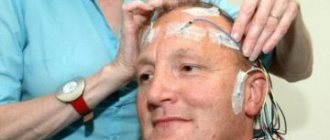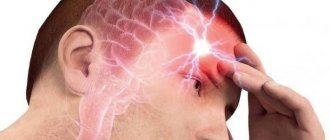Self-esteem is the main key to success in life. Developing positive self-esteem, or healthy self-esteem, is extremely important to our children's happiness and success. As parents, we want our teens to feel confident in who they are.
The reality is that the teenage years are full of change, so it is often the case that children's self-esteem is low.
Important!
The teenage brain is going through a “rewiring” that can leave parents and teens feeling overwhelmed, exhausted, and confused.
Whether it's a boy or a girl, when teenagers find their place in the world, many struggle with situations and challenge beliefs about themselves that they've held onto for years.
Children with low self-esteem feel insecure. If they think others won't accept them, they may not join. They may allow others to treat them badly. They may find it difficult to stand up for themselves. They may give up easily or not try at all. Children with low self-esteem have difficulty coping when they make mistakes, lose, or fail.
The girl stands with her eyes closed
A child with low self-esteem will:
- avoid trying new things;
- feeling unloved and unwanted;
- blame others for your shortcomings;
- feel or pretend to be emotionally indifferent;
- will not perceive his talents and abilities;
- It is easy to be influenced by other people.
Boy with hands drawn on a chalkboard
Peculiarities of perception of the world depending on the child’s temperament
Adolescence begins at age 11 and lasts until age 15. It is at this stage that the child moves from childhood to adulthood. This period is also called “critical” because intense and dramatic changes occur in the organization and biological maturity of boys and girls. An individual characteristic of a minor, like other individuals, is temperament. It is he who often influences how a teenager perceives everything that happens to him. Temperament traits are inherent in a person at the genetic level, and they cannot be significantly modified. How to increase self-esteem and confidence for a teenager? The following information may help with this:
- During adolescence, sanguine people have increased activity, are energetic, efficient, and easily take on new things. It is “difficult to knock such children out of the saddle.”
- Cholerics are very active, unrestrained, hot-tempered, and impatient. Sometimes they go to extremes, their self-esteem either falls or rises.
- Phlegmatic people are less sensitive and emotional. They rarely laugh and remain calm in the face of trouble. Phlegmatic people are more self-confident. Patience and endurance help them to control themselves.
- Things are most difficult with melancholic people. They have high sensitivity and great inertia. This often leads to tears and resentment. Melancholic people often show self-doubt.
During adolescence, character traits are formed and consolidated. It is very important that the child correctly perceives everything that happens to him. Therefore, it is very important to monitor the level of self-esteem of adolescents.
Parental influence on adolescent self-esteem.
The results of numerous studies of adolescence, presented in both domestic and foreign literature, show a noticeable decrease in the influence of parents and an increase in the influence of peers as a reference group on the self-esteem of adolescents. A specific new development of adolescence is the ability to reflect on parental opinion and subsequently tune out from it, to develop one’s own position in relation to parental assessment. The meaning of this detuning is that the parent’s point of view begins to be perceived only as some possible point of view on “oneself.” A specific new development of adolescence is the ability to reflect on parental opinion and subsequently tune out from it, to develop one’s own position in relation to parental assessment. However, with all this, it cannot be said that adolescents are alienated from their parents. When asked where they feel most secure, the answer “in the family” is almost as common as the answer “among friends.” Drawing on the findings of Rosenberg, Coopersmith, and Bachman's research on the relationship between self-concept formation and family interactions, Gekas examined the extent to which parents influence, control, and support on adolescent self-esteem. And as a result, the researcher concluded that both of these factors, as a general expression of parents’ interest in the child, have a positive effect on his self-esteem. This assumption is fully confirmed by practice (Berne R.). Other studies have found that family support and acceptance of the child and his aspirations by parents most influence the level of his overall self-esteem, and school success and some factors associated with teachers (for example, cognitive-emotional acceptance by the teacher of a teenager) are significant only for self-assessment of abilities. Research also notes that the warm, attentive attitude of parents is the main condition for the formation and further reinforcement of positive self-esteem in adolescents. The harsh, negative attitude of parents has the opposite effect: such children, as a rule, are focused on failures, they are afraid to take risks, avoid participating in competitions, in addition, they have character traits such as aggression and rudeness, as well as a high level of anxiety. In addition to the direct influence of parental assessment and their emotional attitude towards the child, the style of communication in the family is of great importance on the formation of self-attitude. Thus, the two identified types of communication style, “symmetrical” and “asymmetrical,” influence adolescents’ self-esteem in different ways.
The symmetrical style involves communication between family members based on partnership principles. Such communication contributes to the child’s formation of a system of his own self-assessment criteria, since a teenager’s self-esteem is supported not only by the respectful attitude of his parents, but also by an assessment of the effectiveness of his activities. In the future, this is a factor contributing to the emancipation of a teenager’s self-esteem. An asymmetrical style of communication in the family involves limiting the child’s participation in preparing and making decisions, which subsequently leads to the formation of an unfavorable self-attitude and self-image. Thus, considering the process of forming self-awareness and self -esteem as a result of a young person’s assimilation of certain life experiences, we see that the influence of family and parental attitudes on the formation of adolescents’ self-esteem is no less important than in younger age groups. It should be noted that the formation of a teenager’s self-attitude is determined not so much by the actual parental assessment and attitude, but by how the teenager subjectively reflects and experiences the parental attitude and his place in the family, i.e., the expected assessment.
Consequences of low self-perception in adolescence
Often the mental and physical health of a girl or guy depends on self-confidence. Parents should not forget about this. Here are the negative consequences that low self-esteem can lead to:
- resistance to stressful situations is lost;
- a depressed mood occurs;
- various fears appear;
- the functions of the gastrointestinal tract are disrupted.
Of course, no parent wants this to happen to their child. Therefore, it is very important to help minors improve their self-confidence. Psychologists recommend tips and exercises on how to raise self-esteem for a teenager.
"You are the most beautiful in the world"
Preschoolers often hear such phrases - today it is fashionable to cultivate leaders and instill irresistibility in business kids who do not see barriers in front of them. In psychology, this is called affirmation - an attitude that influences subsequent behavior.
But everything is good in moderation. It is better to organize acquaintance with failures at an early age than to treat a child for neuroses when the first teenage difficulties in communication and achievements arise.
Do you criticize or praise your child more often?
- I criticize more than I praise 44%, 83 votes
83 votes 44%83 votes - 44% of all votes
- I praise and criticize approximately equally 37%, 70 votes
70 votes 37%
70 votes - 37% of all votes
- I praise more than I criticize 19%, 36 votes
36 votes 19%
36 votes - 19% of all votes
Total votes: 189
21.05.2018
×
You or from your IP have already voted.
Primary school is the period when self-esteem is most influenced by academic success. The first teacher is the most authoritative elder in the life of a junior student, and it is important to choose a modern teacher who develops talents and helps in the development of the best personal qualities.
Parents should avoid criticism and conflicts based on academic performance, and patiently help them cram the multiplication tables and solve problems about trains.
A teenager's self-esteem often depends on the opinions of peers. The leading activity at this age is communication and knowledge of all facets of the social life of an adult. Every day of a teenager is a competition in adulthood; studies fade into the background. Girls focus on appearance, boys on physical strength.
It is difficult for adolescent children to adequately evaluate themselves, because a confident sense of adulthood conflicts with insufficient life experience. The result of this conflict is anxiety, self-doubt, fluctuations in self-esteem, and decreased school performance.
To raise a teenager’s self-esteem, it is necessary to maintain contact with the child by all means, explaining the limitations by external factors: “You are still a minor, you need to grow up and gain experience.” Teach the child to reflect, analyze situations and trust in elders.
The role of parents in shaping the personality of a teenager
Often boys and girls demonstrate their importance in every possible way, but inside they have a lot of doubts. Every step they take into adulthood is difficult for them, and they show indecisiveness. It is important to help children survive this stage and learn not to get irritated themselves. Parents must properly establish communication with teenagers so that they do not express their importance through protest. After all, if minors are unable to communicate with their parents, then they violently splash out their emotions and may leave home. It is at this age that some people get used to drugs and smoking. The influence of the street is very great. It is important that children come home for more than just a sleepover. Teenagers really want to be leaders in front of their peers.
Every parent should know how to increase the self-esteem of their daughter or son. First you need to accept and understand your child’s position. Support at this moment is very important. Reproaches and comparisons do not always produce results. It's time to start looking at a teenager as an adult. Respect, a gentle form of communication, the opportunity to express oneself - this is what minors need.
Inconsistency in the level of self-esteem
The level of self-esteem can change: there are many ways to get rid of an inferiority complex and become a confident person. You can read more in the article How to become confident? Among famous people who have achieved success, there are many who had low self-esteem as children, but managed to overcome it. The level of self-esteem may become lower due to serious failures, prolonged stressful environments, problems communicating with parents, etc.
Formation of adolescent self-esteem
Psychologists say that low self-esteem is observed in 90% of adolescents. You need to be prepared for this. Parents should know how to raise a teenager’s self-esteem and help him during this difficult period. Remember that parental comments and reproaches only further lower children's self-esteem. It is important not to harm them.
It is worth understanding what self-esteem is. It includes a teenager’s analysis of his physical characteristics, actions, moral qualities, and abilities. Self-esteem begins during adolescence. She goes through several steps. First there is a naive ignorance of what is happening, then there is a wavering self-esteem. The focus of teenagers shifts to what is hidden inside.
Self-esteem determines the social adaptation of an individual, regulates his behavior and activities. Sometimes an overestimation of oneself is formed, and in other cases an underestimation. It is important to find a middle ground here. No matter how much the mother at this moment convinces her son that he is attractive, he will harbor doubts if not a single girl at school pays attention to him.
Dynamics of self-esteem.
The most obvious changes are in the content side of adolescents' self-esteem. This is explained by the fact that it is during this period, quite short in duration, that there is a sharp transition from a fragmented and insufficiently clear vision of oneself to a relatively complete, all-encompassing self-concept. Thus, the number of qualities that an older teenager recognizes in himself is twice as large as that of younger schoolchildren. When assessing themselves, high school students are already able to cover almost all aspects of their own personality - their self-esteem is becoming more and more generalized. In addition, their judgment regarding their shortcomings also improves. Adolescents' judgments about themselves convey a bright background to their mood, a feeling of the joy of being. Teenagers reveal themselves in categories that reflect their educational activities, favorite activities, interests, and hobbies. They are focused on ideal self-esteem, but the gap between their real and ideal self-esteem is not traumatic for many of them. Various studies have noted that the content of adolescents’ self-esteem is dominated by basic moral traits - kindness, honesty, justice. A fairly high level of self-criticism among adolescents allows them to recognize many negative qualities in themselves and realize the need to get rid of them.
Borderline disorders are initial (initial) forms of mental abnormalities in which there is no pathological deformation of personality. “Borderline consciousness” - changes in consciousness associated with borderline mental disorders. Ambivalence is an internally contradictory emotional state or experience associated with an ambivalent attitude towards something, characterized by simultaneous acceptance and rejection. So, the most significant and well-recognized qualities of your “I?” For a high school student, communication, volitional and intellectual qualities are important, which allows us to consider them as the basis for a teenager’s value-based attitude towards himself. In this case, self-knowledge, the formation of self-esteem, self-respect are carried out primarily under the influence of those people from the circle of closest contacts who are understood by him as bearers of precisely these qualities, developed at the standard level. The content of girls' self-esteem concerns to a greater extent the awareness and assessment of their relationships with other people. The dynamics of value judgments from adolescence to adolescence is that the value judgments of adolescents, determined by the expected assessment from peers, are aimed primarily at finding an answer to the question of how he is among others, how similar he is to them. For young men, value judgments determined by their own ideal are aimed at finding an answer to the question of what he is like in the eyes of others, how different he is from them and how close he is to his ideal. Later, the self-esteem judgments of young people are determined by the synthesis of various types of assessments of others, the results of their activities, and are aimed at finding their significance for others and for themselves.
Features in adolescence
The complex and contradictory period of formation of self-analysis in a teenager determines how successful he will be in adulthood. Good self-esteem will help you interact normally with the opposite sex, achieve your goals, and achieve success. One of the features of this period is that the authority of their parents begins to decline among minors. If peers see a teenager as handsome, smart, and cheerful, then he values himself. If peers react negatively to him, then self-esteem drops. Just don’t step aside, it’s important to help the child. During this period, children want to experience everything through their own experience. Therefore, advice must be very correct.
SELF-ESTEEM PROBLEMS IN ADOLESCENCE
SELF-ESTEEM PROBLEMS IN ADOLESCENCE
Adolescence is one of the most important years in personality development. At this age, the formation of a worldview and picture of the world, the formation of the most important mechanisms for regulating a person’s full life activity, and, above all, self-esteem, self-identification, the formation of self-awareness, the perception of moral norms and values. During school years, there is an active search for the meaning of life - new formations are formed that ensure psychological readiness for self-determination. However, school education often stands aside from solving these problems, since the education of schoolchildren in a traditional school is mainly aimed at mastering a certain amount of knowledge in individual disciplines that have little connection with each other and with the life tasks of a teenager.
During this period, it is especially important to create conditions for a teenager to form an adequate, full-fledged, socially active personality that has its own dignity and is aware of its self-worth - a personality with adequate self-esteem. Self-esteem largely determines social personality and is directly related to the process of social adaptation and maladaptation of the individual.
Social competence is a complex concept, which is understood as: the degree of adequacy and effectiveness of responding to problematic life situations, achieving real goals in a special social context, using suitable methods for this and positive development as a result of activity. “Confirmation by others of the adequacy of the subject’s social behavior, his ability to participate in a complex system of interpersonal relationships and to successfully understand other people.”
An integral part of social competence is self-esteem. Self-esteem is how a person evaluates himself, his capabilities, and his actions. We constantly compare ourselves with others and, based on this comparison, we develop an opinion about ourselves, about our capabilities and abilities, our character traits and human qualities. This is how our self-esteem gradually develops. There are people with low, high and adequate self-esteem. The most adequate attitude towards oneself is the highest level of self-esteem. Without this, it is very difficult to define yourself in life.
Adolescence is one of the most important years in personality development. At this age, the formation of a worldview and picture of the world, the formation of the most important mechanisms for regulating a person’s full life activity, and, above all, self-esteem. As well as self-identification, the formation of moral norms and values.
Teenagers strive to enter adulthood as quickly as possible, they want to have all the privileges of adults, to get rid of parental care, but at the same time they are completely unprepared for independent life. They don’t understand that for the privileges of adults they have to pay with increased responsibility for their actions. They are in a hurry to gain their life experience. Physiologically, some teenagers, especially girls, even at the age of 15 are already ready to enter into intimate relationships with the opposite sex. They consciously do this, often not understanding the responsibility they have as a result, not only for their own lives, but for the lives of their future children.
Students at our education center come to study with us at the age of 12 years and older. As a rule, these are children with deviant behavior and weak motivation to learn. Most of our students live in single-parent families, many of them are registered with the police. This category of adolescents is characterized by inadequate self-esteem. Despite the fact that our students were not successful in their previous place of study, they generally have high self-esteem. Some of them have severely low self-esteem. It is difficult to say which of these extremes causes more harm to the development of a teenager’s personality.
As a result of a survey conducted among students in grades 8-9, it was revealed that most of them - 62% - have inflated self-esteem, a smaller part - 35% - have low self-esteem, and only 3% of students have self-esteem close to adequate.
If a teenager's self-esteem is low, this leads to self-doubt, timidity and lack of daring, and the inability to realize their abilities. This assessment is manifested in statements like: “I will never succeed in this”, “I will not be able to learn this”, “It’s not my fault that...”, etc. Low self-esteem leads to many reasons: lack of parental attention, indifference from on the part of adults, or the other extreme – overprotection, constant criticism, inflated demands on the child. All of this undermines the development of a healthy sense of self-worth. Such students often try to compensate for their complexes with increased aggressiveness, demonstrative behavior, and the use of alcohol and psychoactive substances.
Teenagers with high self-esteem believe that after graduating from school they will go to college or institute, and then they will be able to work as managers of enterprises, or will have their own business. Some seriously suggest that education is completely useless. They are confident that even without education they will be able to successfully run their business, receiving a salary of at least 40-50 thousand rubles per month. For less, in their words, they are not ready to work. Perhaps this is bravado, but when they are offered a real job through a youth labor exchange, upon hearing the proposed salary level (6-8 thousand rubles), they immediately refuse this job. Thus, after finishing their studies, many of our students, faced with reality, get lost and cannot find themselves in this life.
It turns out that at 17-18 years old they still have little idea of where they could work, in what specialty and what kind of salary they could receive for it. Many of them do not know where their parents work or what exactly they do at work. But they have a good idea of what brand of car they want to have, what model of iPad to buy, what club to go to on vacation. The situation is worse when it comes to building a real model in your head for achieving these goals. Some, having never found a legal way to get what they want, take the path of crime. This is a quick, albeit not safe, way for them to satisfy their needs. Many of the students have never done any work and do not even have responsibilities at home. A player, a computer, a telephone are the objects that they have learned to handle perfectly.
Some of our students quite seriously consider it their life’s goal to marry a very wealthy man, preferably an oligarch. But when you start asking them how they are going to achieve their goal, they get lost. Simple question: where are you going to meet the oligarch? Baffles them. They don’t think about the ratio between the number of oligarchs and girls dreaming of marrying them. Girls consider the main condition for success to look good and be beautifully dressed.
Inflated self-esteem leads to unreasonable self-confidence. Such a person often ignores failures in order to maintain the usual high assessment of himself, his actions and deeds. Fair comments are perceived by such people as nit-picking, and an objective assessment of work results as unfairly underestimated. Failures appear as a consequence of someone’s machinations or unfavorable circumstances that are in no way dependent on the actions of the individual himself.
A teenager needs to have a positive self-image, which is an indispensable condition for happiness and the ability to adapt to changing social conditions. If a child has negative self-esteem, then he is able to find insurmountable obstacles in almost every task. The exam situation for such teenagers turns out to be simply catastrophic. The role of the family in the formation of a student’s positive self-esteem is important here. In the student body, at school, and especially in the family, every teenager should be the center of attention, then he will have adequate self-esteem.
The formation of adequate self-esteem largely depends on a fair assessment of parents, teachers, and classmates. It is important to help the student believe in himself, in his capabilities, in his worth. The main role in this, of course, is the parents, but not all of them are ready for this role, and then the teacher comes to the fore. Often it is with us that the child shares his successes and failures, so we must support him by forming an adequate positive self-esteem.
One of the ways to form adequate self-esteem in students is to participate in various social projects and business games.
— in the course of working on social projects, students develop skills of social behavior, the ability to communicate with adults, and conduct dialogue.
— work with official documents, defend your opinion, develop teamwork skills;
— attention is drawn to current social problems of the city and surrounding people;
— children are involved in real practical activities.
Advice for parents and teachers interested in developing adequate self-esteem in a teenager
- Don’t protect your teenager from serious matters; let him make his own decisions. Don’t try to solve all life’s problems for him. But don’t set him impossible tasks that he’s simply not mature enough to complete.
- Give your child the right to choose.
- Don't overpraise your teenager, but don't forget to reward him when he deserves it.
- Encourage initiative.
- Don't compare one child to another. Compare him with himself (what he was yesterday or will be tomorrow).
- Don't be afraid to show your children your love!
Self-esteem of a teenage girl
A mother may well convince her minor daughter of her success. How to increase self-esteem for a teenage girl? First, help her take care of herself. Take him to a hairdresser or beauty salon. It is very important for a girl to feel beautiful, well-groomed, important, and valuable. Just don’t force her to do it, find a way to involve your daughter on a voluntary basis. A great idea would be to have a photo shoot in a new look. You can send your daughter to courses on creating your own style.
Invite the girl to do some housework, where she will demonstrate her abilities. Take an interest in the girl’s school life and make sure that the teachers treat her well. Instances of humiliation and ridicule by teachers are unacceptable.
Boosting guys' self-esteem
Teenagers often focus on their parents. So, guys can imitate their father. It is important to be a worthy example. Those who observe alcohol consumption at home may also become addicted to it. Even the level of education of children depends on the level of knowledge of parents. Your actions and deeds influence young men.
It is very important for guys to focus not on appearance, but on achievements. Inspire your teenager to do good things that you will later be proud of. A father can teach his son to fish, drive a car, or play the guitar. A young man's self-esteem will definitely rise if he can brag about this to his friends. If the child cannot master all subjects perfectly, focus him on his favorite one. Maybe it will be physical education, history or biology.
The relationship between self-esteem and socio-psychological status.
Socio-psychological status is a concept that denotes a person’s position in the system of interpersonal relationships and the measure of his psychological influence on group members. Social perception is an area of socio-psychological research in which the processes and mechanisms of people’s perception and evaluation of various social objects, events, and other people are studied. Low status is the “invisible” role of the subject in interpersonal relationships; the individual has little or no influence on the dynamics of relationships in the group. High status is a significant position in the group and an active influence on the dynamics of relations in the group. The well-known tendency of adolescents to group and the peculiar, often rigid, intra-group status differentiation inherent not only in informal groups, but also in the school class, makes it necessary to consider the relationship between a teenager’s self-esteem and his socio-psychological status. Data from a number of studies by domestic psychologists show the presence of this relationship, which is primarily positively correlated with the level characteristics of adolescents’ self-esteem. Ya. L. Kolominsky (1976) established a number of interesting patterns of social perception in adolescents:
- a tendency towards overestimated self-esteem of sociometric status among low-status students and underestimation among high-status students;
- egocentric leveling - the tendency to attribute to other group members a status either equal to one’s own or lower;
- retrospective optimization is a tendency to evaluate one’s status in previous groups more favorably.
Subsequent research in this area confirms the influence of the characteristics of a teenager’s self-esteem on his socio-psychological status in the classroom: the more critical the teenager is of himself and the higher his self-esteem, the higher his positive sociometric status. And further, the higher the self-esteem and the higher the level of aspirations, the lower the positive sociometric status or the higher the negative status, depending on the behavioral characteristics of the person manifested in relation to the group: those prone to rational conformism fall into the “neglected” group, those prone to nonconformism fall into the “rejected” group. Some authors find the reason for this dependence in the growing self-criticism of adolescents. At the same time, they point out that a teenager’s incorrect awareness of his position in a team is often one of the main reasons for the emergence of conflict situations. A deviation in the adequacy of a teenager’s awareness of his position in the team, either towards overestimation or underestimation, can lead to undesirable results. If, for example, a student overestimates his position, then, as a rule, he has a negative attitude towards his comrades, showing disdain, while underestimation leads to uncertainty and alienation in the teenager.
More praise, less criticism
The task of parents is to bring the child’s self-esteem as close to reality as possible. If you criticize your son or daughter all the time, their self-esteem will drop completely. Don't be stingy with praise. It is important to encourage any endeavors of a teenager. Never make fun of a child if he fails at something. Try to help him, give maternal or paternal advice, just do it unobtrusively. Encourage the teenager, tell him that he will succeed. If you don't know how to raise a teenager's self-esteem, show your son or daughter that you believe in them.
Forming the correct perception of criticism
Always show interest in the affairs of the minor and find out about his difficulties. It is important to properly teach him to accept criticism from friends or teachers. Explain to children that sometimes you need to admit your mistakes or defend your point of view in a cultural manner. Do not feel sorry for the upset teenager, but simply advise him how to behave in such situations. Explain to your child that criticism is not a personal insult, because others may have a different opinion than he does. Let him understand that criticism can become an incentive for further development, an objective assessment of his further actions.
Help in maintaining external attractiveness
Teenagers pay special attention to their appearance. And not just girls. If you are not your child’s authority on choosing a style, you can go to a stylist. Correctly chosen hairstyle and clothes are very important. Teach children to tidy up their skin and teeth. During adolescence, both boys and girls often experience acne. This brings them a lot of inconvenience, although they are sometimes embarrassed to say so. Don't consider this problem a trifle. If cosmetic procedures do not help, be sure to see a dermatologist.
Adequacy of self-esteem
Many researchers note a gradual increase in the adequacy of self-esteem in adolescence. R. Berne explains this by the fact that adolescents rate themselves lower on those indicators that seem important to them, and this decrease indicates their greater realism, while children tend to overestimate their own qualities. Sex differences. Some studies have found that there are no significant differences between girls and boys in the ability to adequately self-assess. However, girls' ability to adequately evaluate others is higher, which is explained by their greater interest in other people. But it should be noted that the transfer of knowledge about others to their own self in girls does not exceed, and perhaps is somewhat behind, a similar ability in adolescent boys. Adequate self-esteem is a person’s realistic assessment of himself, his abilities, moral qualities and actions. Adequate self-esteem allows the subject to treat himself critically, to correctly correlate his strengths with tasks of varying difficulty and with the demands of others. Inflated self-esteem is an inadequate overestimation in the subject’s assessment of himself. Low self-esteem is an inadequate underestimation of oneself by the subject. Psychological stability is the resistance of an individual to the influences of the social environment, including the influences of subjects of interpersonal interaction.
V. Kvade, V. P. Trusov presented data on indicators of various types of self-esteem in adolescents. Thus, adequate self-esteem, in their opinion, is predicted by a teenager’s reliably strong orientation towards his future profession and a high teacher’s assessment of the fulfillment of norms of moral behavior. Inflated self-esteem is caused in a teenager by a low assessment of his behavior by peers, while low self-esteem is caused by low psychological stability (V. Kvade, V. P. Trusov, 1980).
Development of talents and mental abilities, search for new acquaintances and opportunities
Who, if not you, can identify a teenager’s talents. Assign him to a circle, section, holiday camp, and go with him on an interesting journey. In a new team, the child will be able to open up differently. This will help reveal new sides of him, look at him with different eyes. Perhaps it is difficult for a teenager to find mutual understanding among his classmates; he has no one to communicate with. Perhaps he will feel good in a theater group, where he can show his talent and sense of humor. A large social circle will help a teenager reveal different facets of his personality. In adolescence, you can teach your child to understand people.
The nature of self-esteem and personality traits
The nature of adolescents’ self-esteem determines the formation of certain personality traits. For example, its adequate level contributes to the formation of self-confidence, self-criticism, perseverance or excessive self-confidence and uncriticality in a teenager. A certain connection between the nature of self-esteem and educational and social activity is also revealed. Teenagers with adequate self-esteem have a higher level of academic achievement, they do not have sharp jumps in academic performance and have a higher social and personal status. Teenagers with adequate self-esteem have a wide field of interests, their activity is aimed at various types of activities, as well as interpersonal contacts that are moderate and appropriate, aimed at learning about others and themselves in the process of communication. Teenagers with a tendency to strongly inflate self-esteem show quite limited types of activities and a greater focus on communication, which is of little substance. Aggressive teenagers are characterized by extreme self-esteem (either maximally positive or maximally negative), increased anxiety, fear of wide social contacts, egocentrism, and inability to find a way out of difficult situations. Data from numerous studies show that adolescents with low self-esteem are susceptible to depressive tendencies. Moreover, some studies have found that low self-esteem precedes or is the cause of depressive reactions, while others have found that depressive affect manifests itself first and is then incorporated into low self-esteem. It is known that starting from about 8 years of age, children actively demonstrate the ability to evaluate their success in various areas. The most significant of them were five: school performance, appearance, physical abilities, behavior and social acceptance. However, during adolescence, school performance and behavior become important for evaluation by parents, and the other three - for peers. Teenagers with adequate self-esteem have a wide field of interests, their activity is aimed at various types of activities, as well as interpersonal contacts that are moderate and appropriate, aimed at learning about others and themselves in the process of communication. Teenagers with low self-esteem are susceptible to depressive tendencies. Teenagers with a tendency to strongly inflate self-esteem show quite limited types of activities and a greater focus on communication, which is of little substance.
Showing love is good!
It goes without saying that parents love their children. But not all adults know how to express heartfelt affection. If this is not done, then the teenager will feel useless and self-esteem will fall. Learn to talk about your feelings yourself, show tenderness, show sympathy. Let your son or daughter feel that you unconditionally, unconditionally, sincerely accept him for who he is. Tell your child that you are happy to spend time with him and how good it is that you have him. Try to do it emotionally. Express your feelings through nonverbal (wordless) means: a sincere sparkle in your eyes, close attention, touching your shoulder, hugging. If a teenager feels loved, his self-esteem will definitely increase.
Concept and types of self-esteem
Definition 1
Self-esteem is the level of understanding of oneself, assessment of one’s personality, one’s negative and positive qualities, part of the self-concept.
A person who loves himself will have higher and more adequate self-esteem. Self-esteem is a very significant indicator that influences a person’s life. A person’s confidence in his own strengths and his own merits helps him achieve success and, conversely, feelings of guilt and shame, unjustified shyness prevent internal needs from manifesting and being realized.
In childhood, basic self-esteem is formed, which changes over time and is subject to correction.
Self-esteem influences behavior and personal development, relationships with other people, while performing regulatory and protective functions. It creates the basis for perceiving your own success or failure. The stability and autonomy of the individual is ensured by its protective function.
Finished works on a similar topic
- Course work Formation of self-esteem in adolescents 410 rub.
- Abstract Formation of self-esteem in adolescents 220 rub.
- Test work Formation of self-esteem in adolescents 190 rub.
Receive completed work or specialist advice on your educational project Find out the cost
As noted by I.Ya. Winter, self-esteem of a developed personality forms a complex system - it determines the nature of a person’s self-attitude and includes general self-esteem, reflecting the level of self-esteem, acceptance or non-acceptance of oneself, and private self-esteem of individual aspects of one’s personality.
Psychology distinguishes three types of self-esteem:
- adequate
- inadequate,
- mixed.
With adequate self-esteem, a person soberly realizes his strengths and weaknesses, knows his capabilities and needs, and soberly determines his inner potential. His self-esteem coincides with reality. A person with adequate self-esteem is capable of self-criticism, eliminating his shortcomings and cultivating his strengths.
Inadequate means distorted self-esteem, i.e. a person’s opinion about himself does not coincide with reality. Self-perception with inadequate self-esteem can be overestimated or underestimated. In the first case, he believes that he has qualities that are not inherent to him, and in the second case, he does not accept himself at all. In any case, inadequate self-esteem interferes with professional achievement and communication.
Need advice on your academic work? Ask a question to the teacher and get an answer in 15 minutes! Ask a Question
As for mixed self-esteem, at different periods of life a person treats himself differently - sometimes he shows confidence, sometimes he becomes weak and complex. For example, you can be confident in your profession and achieve good results in it, but consider yourself unworthy of your partner in your personal life.
Since self-esteem is established from early childhood, parents showing their love to their child are of great importance. Unconditional love does not depend on good behavior; a child is loved for who he is, and not because he put away his toys or got a good grade. Otherwise, as an adult, he will believe that you can’t just love like that, a good attitude must be earned.
In adulthood, self-esteem may fall, for example, a person works hard and well, but there is no career growth. In this case, doubts about abilities may arise. If self-esteem is initially normal, the reason will be found, but if initially self-esteem was low, then it may fall even lower.
Parents as psychologists
In the age of the Internet, a father and mother can take on the role of a psychologist for a teenager if they suddenly notice low self-esteem. Experts advise conducting a test to determine a teenager’s self-esteem. After this, you can have a conversation with your child about the need to love and accept yourself with all your shortcomings. Tell the minor that everyone can make mistakes and that is their right. It is important to convey to your son or daughter that you should not concentrate on shortcomings. Advise your child to communicate with confident guys. For cases when the situation gets completely out of control and the teenager loses self-confidence, suggest that he use a deep inhalation and exhalation exercise. You need to breathe and count to 10. This will help bad thoughts go away, and your confidence in your abilities will rise. Communicate more with your children, ask them for advice, show them that they are important to you.
Emancipation of self-esteem
One of the main features characterizing the self-esteem of adolescents is the ever-deepening emancipation of their self-esteem, that is, the desire of adolescents to form their self-esteem regardless of the assessments of other people. Without disputing this position, it should still be recognized that a person is always in various kinds of social interactions and it is impossible for him to avoid a certain dependence on the assessment of his immediate environment. Development of self-esteem in the process of communication The repeatedly proven theory of the “mirror self” by C. Cooley about the positive attitude of significant others as one of the main determinants of the level of self-esteem is also true for the self-esteem of adolescents.
Among the four sources of social support: parents, teachers, classmates, close friends, parental support and the attitude of classmates most fully influence a teenager’s self-esteem.











